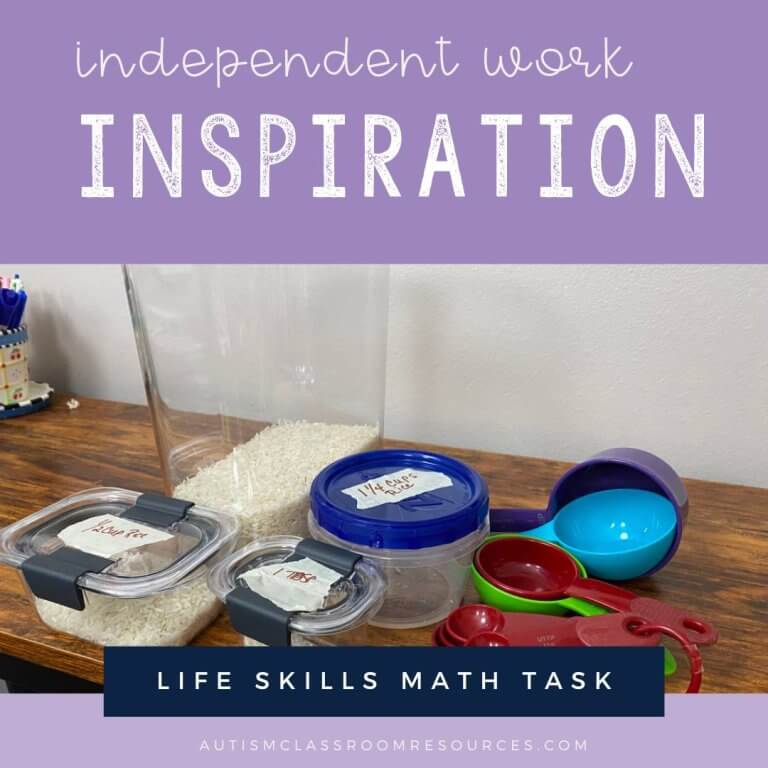Sharing is caring!

Click pictures to purchase on TpT
I often get asked how to increase the difficulty of a student’s independent work system. Trying to make sure that our students are able to do the independent work tasks but aren’t getting bored is definitely a fine balance. Using tasks that require discrimination of details between pictures for matching is one step up from simple matching. We definitely need to move beyond matching, but this helps students not only practice independence as well as attending to details of what they are working on.
Matching is a really common skill we use in independent work because the students have to have mastered the material. For many of our students, the visual nature of matching makes it an early independent skill, right after put-in tasks.
But, we have to make sure that we move forward from matching to more complex skills. One of the next set of skills to work on to make matching more advanced (but still independent) is matching with more complex patterns or attention to detail.
And that is what this set of tasks is designed to target for students in early childhood grades.
Pattern matching independent work tasks
Click to check them out on TpT
These tasks require the students to be careful in their matching. So rather than just matching by one dimension (e.g., color or shape), they require the student to notice both the color, shape and possibly the pattern.
Attending to more than one dimension of a material or situation is an area that is often difficult for students with autism. And it’s often something that other students skip in an attempt to rush through their work. I like to include these because they are a bit more challenging for the student, but still something they can do if they can match adequately.
By matching the cookies, the students have multiple options for colors and shapes to choose from, which requires more attention.
What’s Included?
In this set there are
- 8 file folders (or divide them into binders and make 16 pages)
- 10 matching train mats (or 5 file folders) in which students pick out the series of train cars
- 20 Matching Task Cards or Clip Cards in which students find the identical item based on a few differences in the item.
Task cards (on the right) are such a great way to differentiate for learners who need different amounts of materials. Have a student who can just match 2 cards, just put 2 in the system. Have a student who works so fast he’s done way before time is up? Put 20 in his basket system to keep him busy. Use clothespins or paperclips (or laminate and use dry erase markers) to mark the answers.
These 10 matching pages of trains have 4 trains on each that require the students to both match the cars and put them in the same order. I like to use them as pages instead of file folders so I can break up the difficulty for some students.
Why are they good for independent work?
When I create independent work tasks, I want to make sure that the activities are engaging and interesting. And I want tasks that I can use for multiple students and differentiate for different needs. And you know I’m particular about making sure they meet all the criteria for good work tasks. So…
- Each task has a clear beginning and end.
- Tasks are designed (with the help of Velcro) to stay together when the student finishes and put them in the finished basket.
- They are easily adapted to individual needs.
- They are visually clear and designed to be simple
- They were designed to be highly visually engaging and capitalize on the visual discrimination skills that are often a strength for students with autism.
Interested in these tasks? Check them out in my TpT Store by clicking the picture below!
Until next time,












![Independent Work-3 Ways It can Become Your Best Classroom Management Tool [A sorting task in a shoebox to sort nouns from verbs on popsicle sticks into plastic cups]](https://autismclassroomresources.com/wp-content/uploads/2023/06/BLOG-22208-3-Ways-Task-Boxes-and-IW-Help-Classroom-Management-2-768x644.jpg)


